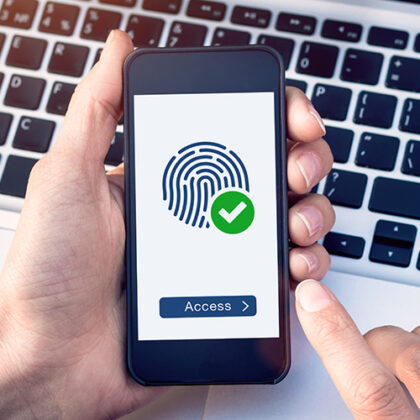Today’s children are increasingly tech savvy and experienced with the internet. More than 57 percent of children aged 3 to 17 used the Internet every day from their homes. While the internet can be a great tool for doing school research, keeping up with the current events and staying in touch with out-of-state family, it can also put children at risk.
Kids who spend time online may come into contact with adult content, scary images, cyber crime, cyber bullying and other types of abusive behavior. Your kids could connect with strangers pretending to be kids but who are actually grown men or women. Kids are often unaware of how to stay safe online and sometimes overshare personal information and photos. This list of tips can help you keep your kids safe when they use the internet.
1. Be a Good Example
Setting an example for your children makes it more likely that they will abide by the family rules. You can start by staying up-to-date with the current technology. Know that kids often gain ground on technological know-how, which is why you need to stay in touch with the most popular apps, games and social media that they use. Even if all of your child’s friends are using a certain social network or an app, it doesn’t mean that your child has to. Knowing about these trends will help you to protect your child.
Keep in mind what you share about yourself and kids on social media. Avoid sharing your child’s personal information, such as phone numbers and the time and location of their whereabouts. Posting your child’s pictures on social media may seem harmless, but in reality, it is riddled with danger and can expose your child to a series of threats such as stolen identity, sexual predators, etc. Only you know what is best for your child, and exposure to social media may not be safe or ideal.
2. Set Rules and Boundaries
One of the most important steps in keeping your kids safe on the Internet is to limit the amount of time that they spend using it. When kids spend too much time online, they are limiting real-life experiences and interactions with others. You can offer alternatives such as a family game night, going to the movies, playing outside with their friends or going out for a hike or geocaching.
You can also set limits on your child’s internet access by setting up your wireless router settings to kick them off of the connection after a specific time. You can do this with a login and password for each family member or for devices that your kids use, such as their iPads or laptops.
If possible, keep electronic devices such as iPads and smartphones out of your child’s reach. Avoid sharing your personal password with your kids. Respect the age limits of social media networks. For example, kids must be at least 13 years old to set up a Facebook account. You can “friend” your child so that you know who they are connecting with and what they are sharing online. As the parent, it is your responsibility to make sure your child follows the rules of social networks, forums, and other online communities.
3. Talk to Your Child
Take time every day to talk with your child and express your interest in his or her activities, schoolwork, hobbies, and friends. Let your child know that you should be the go-to source for problems big and small. Knowing what to expect from your child makes it easier for you to be aware of mood changes and other problems that can result from online activities.
Regular talks with your child about online safety can help to keep you and your child on the same page. Make sure that your child knows the rules on technology and internet use in your home and in other places, such as at a friend’s house or at the library. Your child’s friends, nanny and other caregivers should also know your family rules about internet usage.
4. Monitor and Control
If your home has a family computer, it should be placed in a central spot where you can see it. Laptops, for example, can be used on the dining room table. You can set up Windows computers to deliver an online activity report through the family features control in the control and settings tab.
You can also set up a screen sharing option on a Mac computer so that you can monitor it from your own Apple device. There are many apps and programs such as Net Nanny that you can pay for and install onto your child’s devices. Norton is another tool that can help you to monitor your child’s activities on social media.
GPS trackers are a useful tool for mobile devices that your child uses for accessing the internet. If you want to block your child from visiting specific sites, use the parental controls through your wireless internet service. If your child is clever, he or she may be able to figure out how to change those parental control settings so make sure that you use a strong password so that your child cannot make any changes.
Wrapping It Up
Spending time on the internet is a common activity for children. You can help to keep your child safe online by setting up parental controls for accessing websites and using accounts on social media networks. Limiting the amount of time your child spends online will also help to keep your child safe.
About the Author
Lisa Michaels is a freelance writer from Portland. Being self-employed, she does her best to stay on top of the current trends in business and technology. Feel free to connect with her on Twitter @LisaBMichaels.





